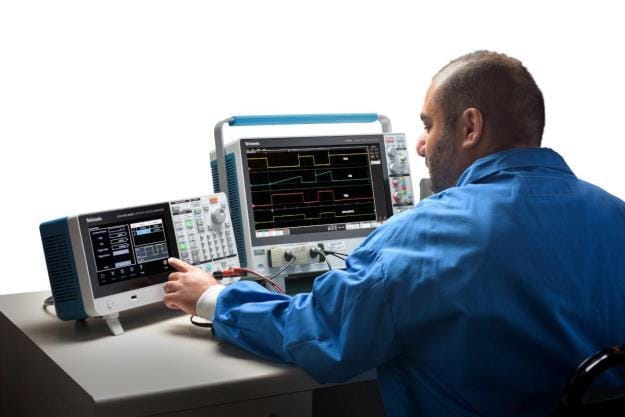- EV Tech Insider
- Posts
- Automate Double Pulse Testing of Wide Bandgap SiC/GaN Devices
Automate Double Pulse Testing of Wide Bandgap SiC/GaN Devices

– The drive to electrify nearly all road transport by 2050 is projected to cause a 27% surge in global electricity demand, encouraging the use of Wide bandgap (WBG) semiconductors like GaN and SiC in power supplies and motor drives.– Tektronix’s John Tucker discusses how automating double-pulse testing for WBG devices can lead to significant reductions in setup and analysis time, ensuring consistent and repeatable results, and faster time-to-market for power converters.
The need to decrease carbon emissions is driving investments in electrical technologies, especially in data centers and electric vehicles. Bloomberg’s Electric Vehicle Outlook report forecasts that the push to electrify almost all road transport by 2050 will result in a substantial 27% increase in global electricity demand. This trend emphasizes the importance of electrical solutions in reducing greenhouse gas emissions and creating a sustainable future.
WBG semiconductors such as GaN and SiC are progressively replacing traditional silicon-based power MOSFETs and IGBTs in switch-mode power supplies and motor drives. This change is due to the superior characteristics of GaN and SiC devices, including faster switching speeds, higher power density, better frequency response, decreased leakage, lower ON resistance, and improved operating temperatures compared to silicon. These improvements lead to better operating efficiency, reduced energy consumption, and easier compliance with regulations, certification requirements, and JEDEC JC-70 wide bandgap power electronic conversion semiconductor standards.
John Tucker from Tektronix recently explored how automating double-pulse testing for WBG devices like SiC and GaN power devices can significantly reduce setup and analysis time. When validating these devices, engineers must test several parameters such as switching loss, peak voltage, peak current, and reverse-recovery charge.
The double-pulse test (DPT) is the preferred method for measuring the switching parameters of WBG devices. It enables efficient collection of critical measurements to validate and optimize power converter designs. Automated DPT setup and analysis can significantly reduce test times, leading to faster time-to-market for power converters. Running tests with full remote control adds an extra layer of safety by keeping you away from the high-voltage, high-current device under test (DUT).
Measuring critical values and ensuring functionality is essential for meeting energy demands and reducing carbon emissions worldwide. Achieving this requires research and testing on new materials, moving us closer to meeting energy demands while complying with new efficiency standards.
This advancement in power device technology could offset the projected 27% increase in global electricity demand, as estimated by Bloomberg. This underscores the importance of timely actions and technological advancements in the electric vehicle industry.
The post Automate Double Pulse Testing of Wide Bandgap SiC/GaN Devices first appeared on EV Tech Insider.